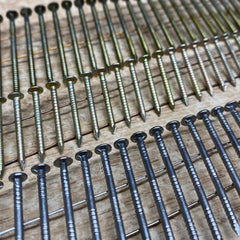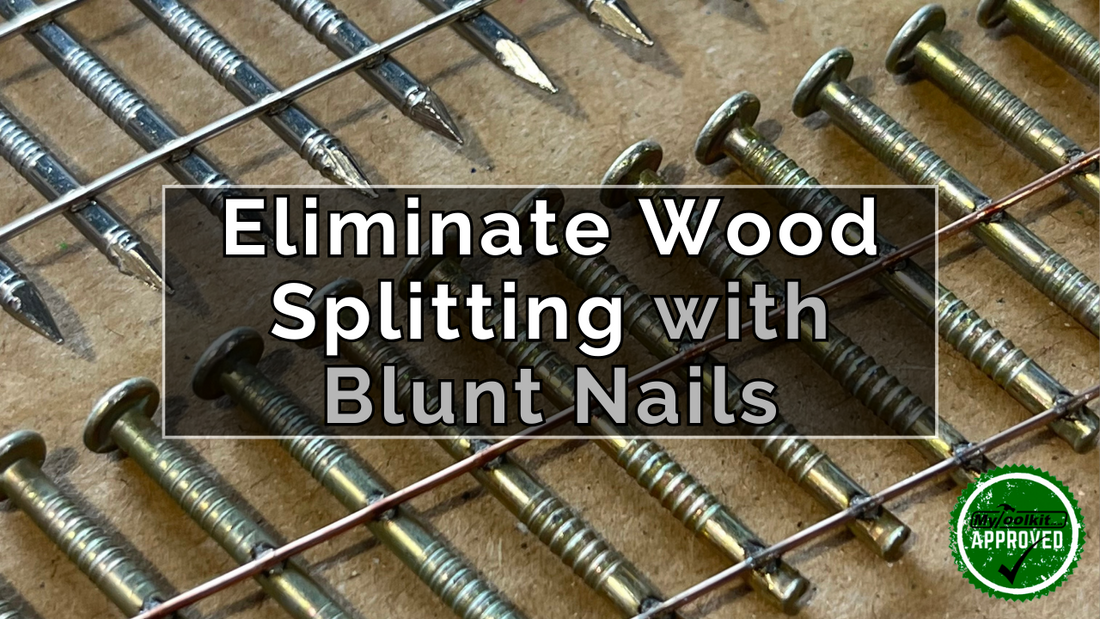When working with timber, your choice of fasteners can make or break your project and for fence manufacturers, wood splitting is a common frustration. We frequently receive calls from panicked fencers seeking a solution for this recurring problem. When we tell them they need blunt nails they're often surprised and typically respond in confusion - "blunt nails? How does that work?".
Well, in this article, we'll explore this intriguing topic and shed light on exactly why blunt nails reduce timber splitting.
Understanding the Basics
Before delving into the science behind blunt nails, let's take a moment to understand the basics. Nails come in various shapes and sizes, but they generally have a pointed tip, which helps them pierce wood fibres with little force. However, this very sharpness can sometimes lead to problems when working with thin and fragile timber such as feather-edge boards.
The Problem of Splitting
Natural grains in the timber are important to note here. As the nail penetrates, the puncture expands while applying outward pressure, tearing the grain's weak fibres and splitting the material. Subsequently, the integrity of the wood is compromised and cracks in the grain are created. This can be especially troublesome when working with hardwoods or softwoods that have a tendency to split easily.

Blunt Nails: The Solution
Blunt nails on the other hand have a flat, slightly rounded tip instead of a sharp point. This unique design means that they exert more downward pressure than outward. As a result, blunt nails have less interference with the natural wood grain and are somewhat more ruthless in their penetration. They rely on raw power and don't necessarily pierce or puncture the wood, meaning blunt nails are far less likely to split the timber.

Other Benefits of Blunt Nails include...
1. Increased Holding Power:
Blunt nails provide slightly more surface contact area between the nail and the wood, leading to improved holding power. This makes them an excellent choice for applications where strength and stability are paramount.
2. Minimised Surface Damage:
The flat tip of blunt nails is less likely to leave noticeable puncture marks on the timbers surface, making them ideal for projects where aesthetics matter.
3. Versatility:
Blunt nails are suitable for various woodworking tasks, from framing and fencing to finish work and carpentry. Their versatility makes them a valuable addition to any toolkit.
Choosing the Right Blunt Nails
When selecting blunt nails for your woodworking project, some important considerations include...
1. Shank:
Blunt nails are available with various shanks, including ring (ribbed), screw and plain. You must ensure that your shank of choice will provide a great enough holding power for your application.
2. Gauge/Length:
Ensure the blunt nails you choose are the appropriate length and gauge for your application. We have a vast array of lengths and gauges available in our coil nail range, including small 22mm coil nails ideal for fencing applications.
3. Finish:
Some blunt nails come with coatings that enhance their resistance to corrosion. The common finishes (from least protected against corrosion to most) include bright steel, galvanised steel and stainless steel. You should consider the environment the project is in and whether it involves exposure to moisture before deciding on a suitable finish. You can learn more about different coil nails here.

Concluding Remarks
In conclusion, blunt nails play a crucial role in preventing wood splitting and ensuring the longevity and stability of your timber projects. Their unique design, reduced splitting potential, and increased holding power make them a valuable nail for any woodworker but especially fencing manufacturers. When used correctly, blunt nails contribute to the overall quality and durability of your creations.
So, the next time you embark on a woodworking project, consider reaching for blunt nails to enjoy the benefits of reduced splitting and enhanced structural integrity.
For more woodworking tips and insights, stay tuned to our blog. Happy nailing!
If you're still confused or have any further questions, don't hesitate to get in touch. You can reach us on 0333 8000 345, info@mytoolkit.co.uk or DM us on our social media channels @mytoolkitonline.
P.s., Subscribe to our newsletter & get useful hints, tips & tricks directly to your inbox!
** When using nails, staples or any tooling equipment, it's important to follow safety guidelines and use them responsibly.





